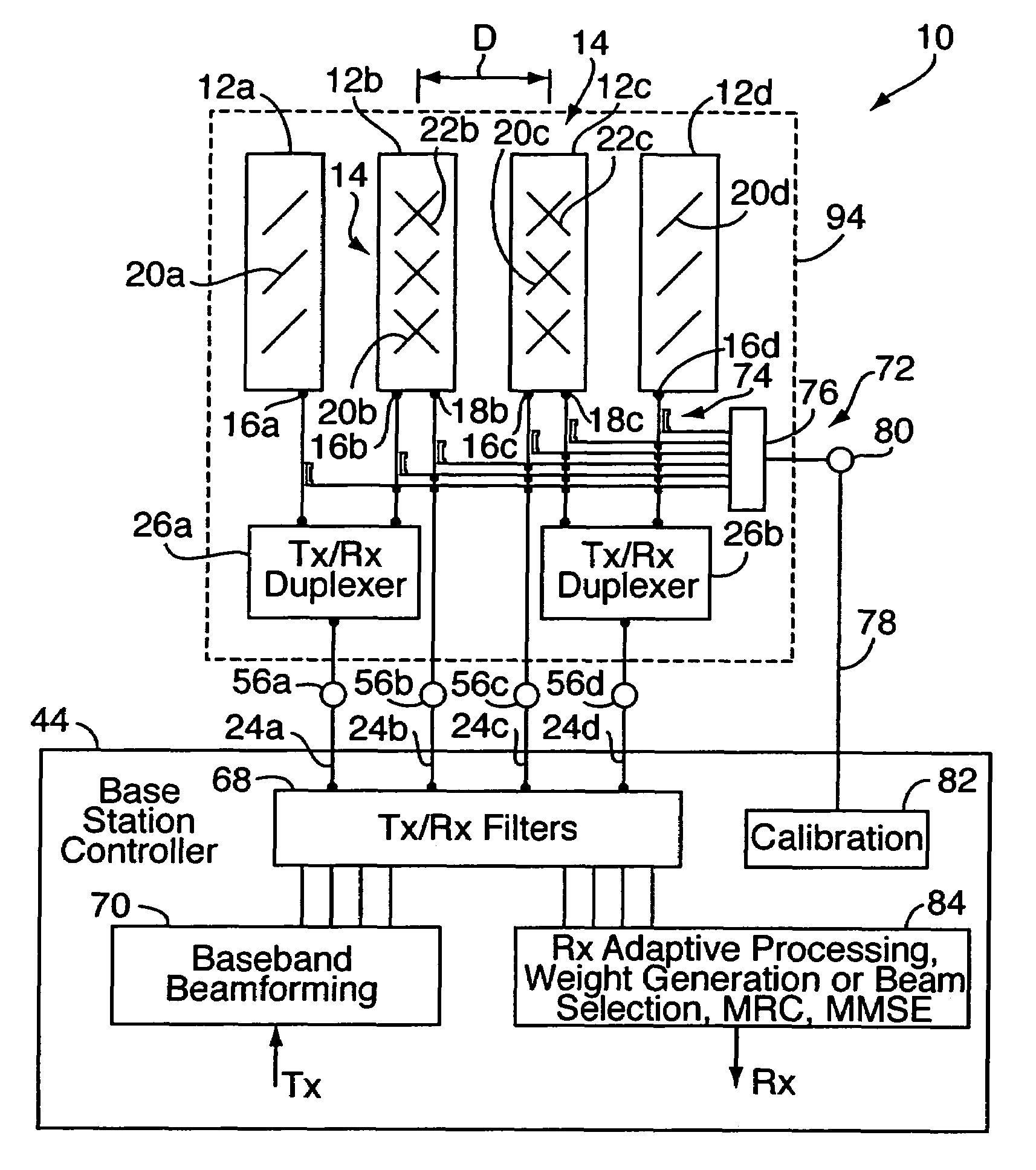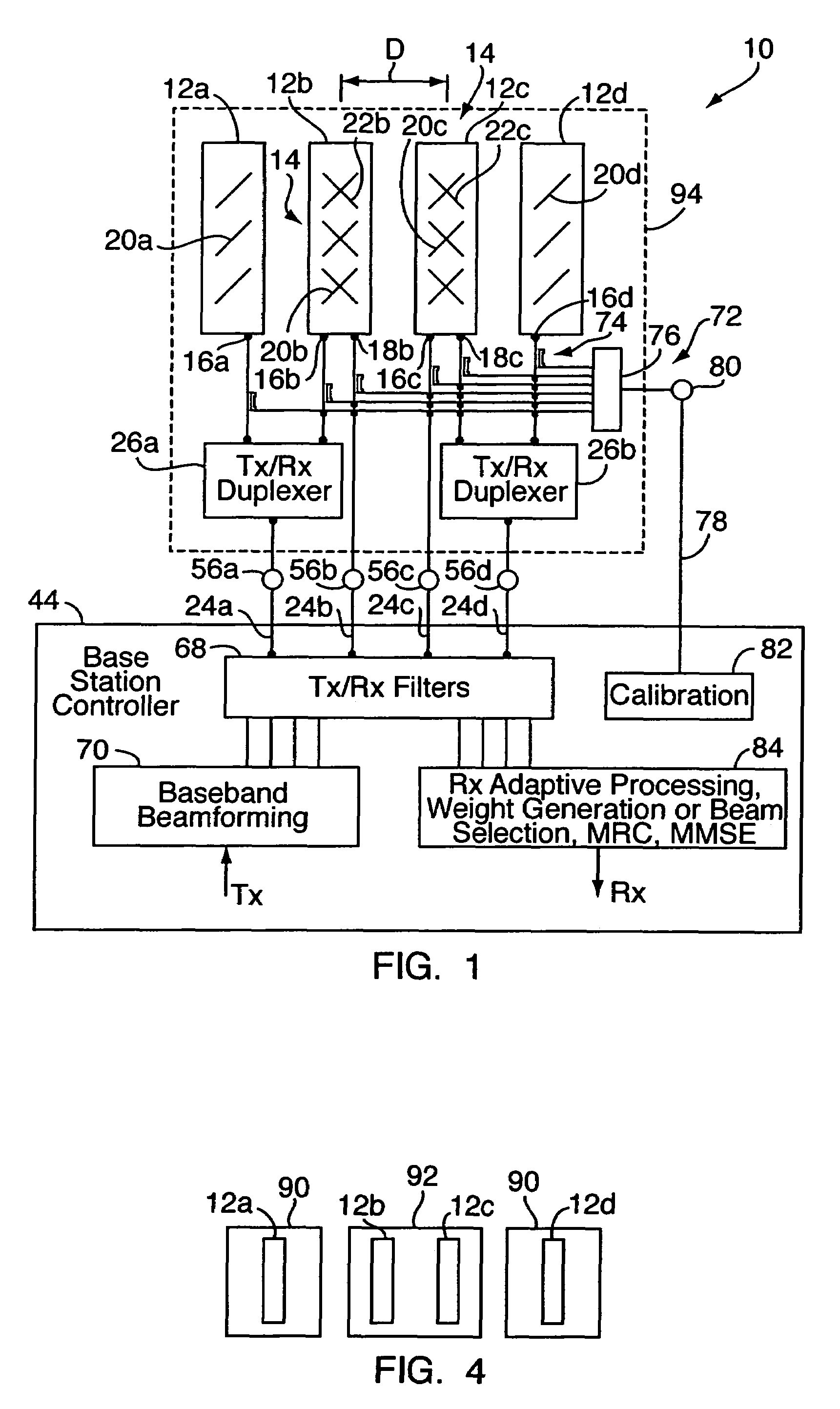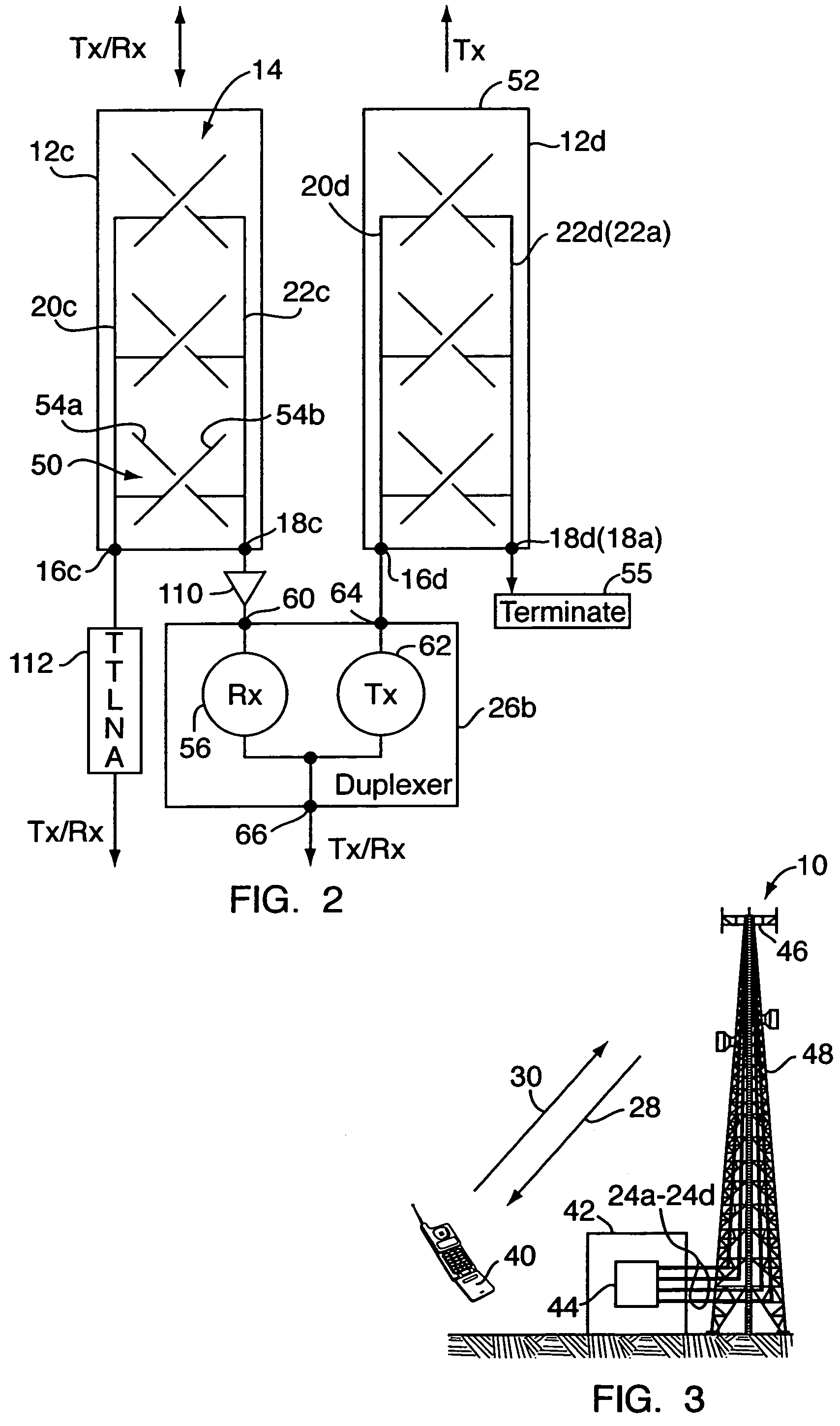Multiple-element antenna array for communication network
a communication network and antenna array technology, applied in the field of radio frequency (rf) communications, can solve the problems of increasing the number of rf feed cables per base station, affecting the quality of service, so as to achieve the effect of reducing the asymmetry of signal patterns
- Summary
- Abstract
- Description
- Claims
- Application Information
AI Technical Summary
Benefits of technology
Problems solved by technology
Method used
Image
Examples
Embodiment Construction
[0018]With reference to FIGS. 1-4, an embodiment of the present invention relates to an antenna array system 10 for transmitting and receiving radio-frequency (RF) signals in a wireless communication network. The system 10 includes four linearly arranged, spaced-apart antennas 12a-12d. The antennas may be antenna columns. Two or more of the columns 12b, 12c may be dual-polarized antenna columns. Each dual-polarized antenna column 12b, 12c is a vertical linear array 14 of dual-polarized radiating elements or groups of elements (sub-arrays) having two independent ports 16b, 18b or 16c, 18c. In other words antenna column 12b includes a first array 20b of radiating elements oriented at a first polarization and connected to a first port 18b, and a second array 22b of radiating elements oriented at a second polarization and connected to a second port 16b. (Note that ports 16b, 18b are shown “reversed”—port 18b is connected to array 20b, for both transmission and reception of signals, whil...
PUM
 Login to View More
Login to View More Abstract
Description
Claims
Application Information
 Login to View More
Login to View More - R&D
- Intellectual Property
- Life Sciences
- Materials
- Tech Scout
- Unparalleled Data Quality
- Higher Quality Content
- 60% Fewer Hallucinations
Browse by: Latest US Patents, China's latest patents, Technical Efficacy Thesaurus, Application Domain, Technology Topic, Popular Technical Reports.
© 2025 PatSnap. All rights reserved.Legal|Privacy policy|Modern Slavery Act Transparency Statement|Sitemap|About US| Contact US: help@patsnap.com



